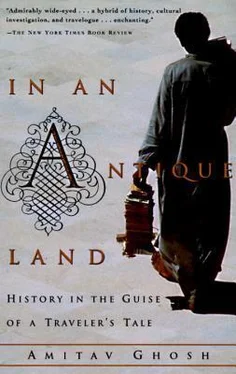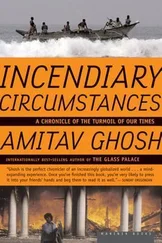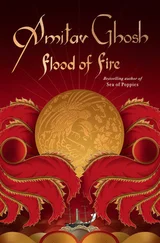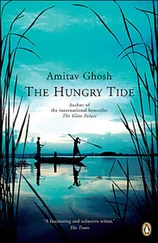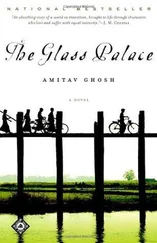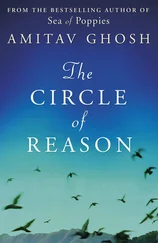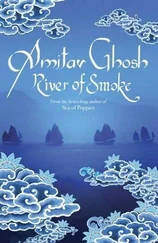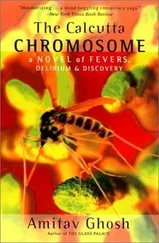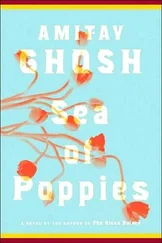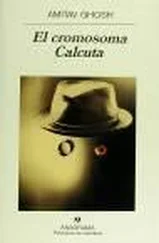From there Ashu and her family would probably have travelled upstream on river-boats as far as the current permitted, before beginning the overland journey into the hills, along the pathway to ‘Jurbattan’. For much of the distance they would have used palanquins carried by porters — then the preferred mode of travel amongst those who could afford it.
Today the road that leads to Srikandapuram runs through vast plantations of cashew and rubber, with low-slung motels and lavish residences dotted along its curves and bends. In the valleys, crops seem to grow in two layers, thriving on the exuberant fertility of the land, with coconut and areca palms soaring above long rows of velvety green pepper-vines. Srikandapuram, when it arrives, proves to be a thriving little town: the houses on the outskirts are bright and new, with sleek shops and sparkling clinics dotted between them. The bazaar at the centre, however, seems to belong to another time; the shops are crammed with sacks of spices, and their owners sit cross-legged behind low counters, bargaining at leisure with their customers.
A narrow road leads south from Srikandapuram, at a precipitous angle, and, after a rapid descent to the coast, it passes through several places that would have been well-known to Ben Yiju, long before he came to India. The ‘Dahfattan’ of his correspondence lies at the junction of two rivers, a small cluster of Gulf-gilded houses known to the world today as Dharmadam. A little further down the coast is Pantalayini Kollam, the ‘Fandarîna’ of the Arabs, and the ‘Pandarene’ of the Portuguese, a quiet town on the sea, a little to the north of Calicut.
The journey ends on a beach between ‘Fandarîna’ and Calicut, at a small fishing-village, hidden behind the shelter of a sand-dune. It is a quiet spot: a few catamarans and fishing-boats lie on a great crescent of sand, a vast beach that is usually empty, except when the fishing-boats come in. The village is called Kappkadavu and on one side of it beside the road is a worn white marker which tells the passer-by that this was where Vasco da Gama landed, on his first voyage to India, on 17 May 1498—some three hundred and fifty years after Ben Yiju left Mangalore.
Within a few years of that day the knell had been struck for the world that had brought Bomma, Ben Yiju and Ashu together, and another age had begun in which the crossing of their paths would seem so unlikely that its very possibility would all but disappear from human memory.
A bare two years after Vasco da Gama’s voyage a Portuguese fleet led by Pedro Alvarez Cabral arrived on the Malabar coast. Cabral delivered a letter from the king of Portugal to the Samudri (Samudra-raja or Sea-king), the Hindu ruler of the city-state of Calicut, demanding that he expel all Muslims from his kingdom as they were enemies of the ‘Holy Faith’. He met with a blank refusal; then as afterwards the Samudri steadfastly maintained that Calicut had always been open to everyone who wished to trade there — the Portuguese were welcome to as much pepper as they liked, so long as they bought it at cost price. The Portuguese fleet sailed away, but not before Calicut had been subjected to a two-day bombardment. A year or so later Vasco da Gama returned with another, much more powerful Portuguese fleet and demanded once again that all Muslim traders be expelled from Calicut.
During those early years the peoples who had traditionally participated in the Indian Ocean trade were taken completely by surprise. In all the centuries in which it had flourished and grown, no state or king or ruling power had ever before tried to gain control of the Indian Ocean trade by force of arms. The territorial and dynastic ambitions that were pursued with such determination on land were generally not allowed to spill over into the sea.
Within the Western historiographical record the unarmed character of the Indian Ocean trade is often represented as a lack, or failure, one that invited the intervention of Europe, with its increasing proficiency in war. When a defeat is as complete as was that of the trading cultures of the Indian Ocean, it is hard to allow the vanquished the dignity of nuances of choice and preference. Yet it is worth allowing for the possibility that the peaceful traditions of the oceanic trade may have been, in a quiet and inarticulate way, the product of a rare cultural choice — one that may have owed a great deal to the pacifist customs and beliefs of the Gujarati Jains and Vanias who played such an important part in it. At the time, at least one European was moved to bewilderment by the unfamiliar mores of the region; a response more honest perhaps than the trust in historical inevitability that has supplanted it since. ‘The heathen [of Gujarat]’, wrote Tomé Pires, early in the sixteenth century, ‘held that they must never kill anyone, nor must they have armed men in their company. If they were captured and [their captors] wanted to kill them all, they did not resist. This is the Gujarat law among the heathen.’
It was because of those singular traditions, perhaps, that the rulers of the Indian Ocean ports were utterly confounded by the demands and actions of the Portuguese. Having long been accustomed to the tradesman’s rules of bargaining and compromise they tried time and time again to reach an understanding with the Europeans — only to discover, as one historian has put it, that the choice was ‘between resistance and submission; co-operation was not offered.’ Unable to compete in the Indian Ocean trade by purely commercial means, the Europeans were bent on taking control of it by aggression, pure and distilled, by unleashing violence on a scale unprecedented on those shores. As far as the Portuguese were concerned, they had declared a proprietorial right over the Indian Ocean: since none of the peoples who lived around it had thought to claim ownership of it before their arrival, they could not expect the right of free passage in it now.
By the time the trading nations of the Indian Ocean began to realize that their old understandings had been rendered defunct by the Europeans it was already too late. In 1509AD the fate of that ancient trading culture was sealed in a naval engagement that was sadly, perhaps pathetically, evocative of its ethos: a transcontinental fleet, hastily put together by the Muslim potentate of Gujarat, the Hindu ruler of Calicut, and the Sultan of Egypt was attacked and defeated by a Portuguese force off the shores of Diu, in Gujarat. As always, the determination of a small, united band of soldiers triumphed easily over the rich confusions that accompany a culture of accommodation and compromise.
The battle proved decisive; the Indian and Egyptian ships were put to flight and the Portuguese never again had to face a serious naval challenge in the Indian Ocean until the arrival of the Dutch. Soon, the remains of the civilization that had brought Ben Yiju to Mangalore were devoured by that unquenchable, demonic thirst that has raged ever since, for almost five hundred years, over the Indian Ocean, the Arabian Sea and the Persian Gulf.

1
LOOKING BACK, IT seems to me now that until I returned in 1988, Shaikh Musa had not realized himself quite how dramatically things had changed in Lataifa since my departure, seven years ago. As we sat talking on that rainy evening when I arrived at his door, I had the impression that he was looking back with new eyes, as though the sharp edges of my memories had served to strip away a dense layer of accretions that had gathered upon his surroundings, like bark.
But it was not long before he entered gleefully into the spirit of my wonderment, and soon enough he even began to manufacture little surprises of his own for our mutual delectation. The morning after I arrived, for example, he sent his grandson scampering out of the room on a secret errand while we were eating our breakfast. When the boy returned he had a tray in his hands, and sitting in the middle of it, like a crown on a cushion, was a richly-beaded glass of iced water.
Читать дальше
